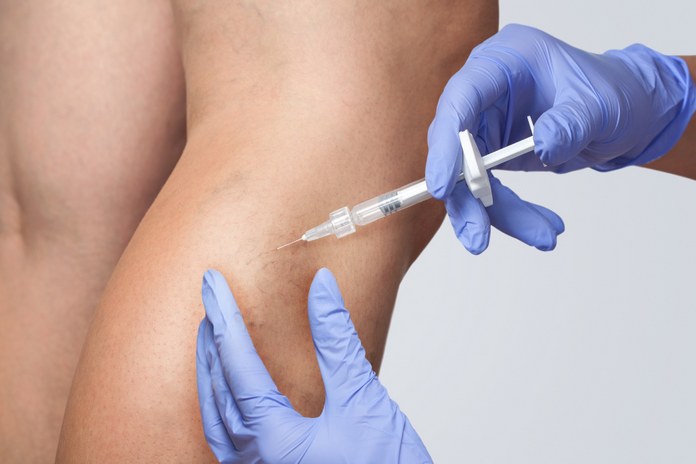Sclerotherapy
Sclerotherapy is a word derived from “scerolsing” effect – a response created by the sclerosing agent that causes inflammation and fibrosis of the affected tissue. It is a surgical intervention that uses an injection of a chemical solution to damage and scar the lining of blood vessels. This solution then causes the blood vessels to close off, which reduces blood flow to the target area. (1
Sclerotherapy is a common procedure that can help treat a variety of conditions, including spider veins, varicose veins, and hemorrhoids. A doctor (usually plastic surgeon) will inject a solution into the vein, which will cause it to collapse and disappear. The treated area may be a little sore afterward, but should heal quickly. The most common sclerotherapy treatment uses a chemical called sodium tetradecyl sulfate, or STS. STS is injected into the vein, which causes it to swell and stick together. This causes blockage of the blood flow through the vein and causes it to disappear over time.

According to the latest statistics from the American Society for Dermatologic Surgery (ASDS), sclerotherapy is one of the most popular procedures performed by dermatologists in the United States. In 2017, ASDS members reported performing nearly 287,000 sclerotherapy procedures, up from 272,000 procedures in 2016. While sclerotherapy can be used to treat a variety of vein problems, spider veins are by far the most common target.
There are several factors that can affect whether or not a patient is a good candidate for sclerotherapy. These include the size and location of the veins, as well as the patient’s age and health history. Patients who are pregnant or breastfeeding are not usually good candidates for sclerotherapy, nor are those who have recently had surgery or been diagnosed with cancer. The best way to determine if sclerotherapy is right for you is to speak with a doctor.

